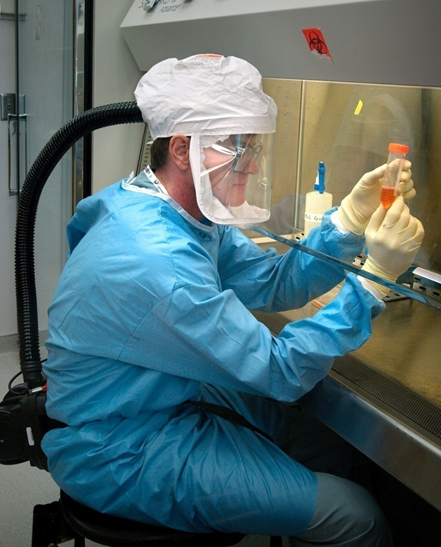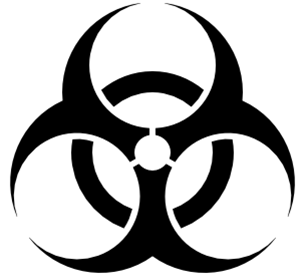Category “B” Biological Agentsare the second highest priority biological agents that have lesser public alertness than agents in Category “A”.
They are moderately easy to disseminate. Biological agents of concern for water and food safety are included in Category “B”.
Agents in Category “B” cause less morbidity and mortality, and they are mostly implicated in outbreaks of food-borne and water-borne diseases.
Examples of biological agents in Category “B” include:
- Staphylococcal enterotoxin B – that cause food poisoning.
- Brucella abortus – that causes brucellosis.
- Chlamydia psittaci – that causes psittacosis.
- Rickettsia prowazekii – that causes typhus fever.
- Coxiella burnetti – that causes Q fever.
- Burkholderia mallei – that causes glanders.
- Burkholderia pseudomallei – that causes melioidosis.
- Ricin toxin from castor beans (Ricinus communis).
- Epsilon toxin of Clostridium perfringens
- Food safety threat pathogens (e.g. Salmonella, Escherichia coli O157:H7, Shigella).
- Water safety threat pathogens (e.g. Vibrio cholerae, Cryptosporidium parvum).
- Alphaviruses – that causes viral encephalitis (e.g. Western Equine Encephalitis, Venezuelan equine encephalitis, Eastern Equine Encephalitis).
- Abrin toxin from Rosary peas (Abrus precatorius).
References
Aschengrau A and Seage G.R (2013). Essentials of Epidemiology in Public Health. Third edition. Jones and Bartleh Learning,
Aschengrau, A., & G. R. Seage III. (2009). Essentials of Epidemiology in Public Health. Boston: Jones and Bartlett Publishers.
Castillo-Salgado C (2010). Trends and directions of global public health surveillance. Epidemiol Rev, 32:93–109.
Centers for Disease Control and National Institutes of Health (1999). Biosafety in Microbiological and Biomedical Laboratories, 4th edn, Washington DC: CDC.
Guillemin J (2006). Scientists and the history of biological weapons. European Molecular Biology Organization (EMBO) Reports, Vol 7, Special Issue: S45-S49.
Halliday JE, Meredith AL, Knobel DL, Shaw DJ, Bronsvoort BMC, Cleaveland S (2007). A framework for evaluating animals as sentinels for infectious disease surveillance. J R Soc Interface, 4:973–984.
Nelson K.E and Williams C (2013). Infectious Disease Epidemiology: Theory and Practice. Third edition. Jones and Bartleh Learning.
Porta M (2008). A dictionary of epidemiology. 5th edition. New York: Oxford University Press.
Rothman K.J and Greenland S (1998). Modern epidemiology, 2nd edition. Philadelphia: Lippincott-Raven.
Rothman K.J, Greenland S and Lash T.L (2011). Modern Epidemiology. Third edition. Lippincott Williams and Wilkins, Philadelphia, PA, USA.
Discover more from #1 Microbiology Resource Hub
Subscribe to get the latest posts to your email.



